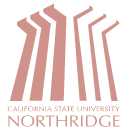
|
The Santa Fe Institute Presents
The Ergodic Theory of Traffic Jams
a lecture by
Department of Mathematics, University of Wisconsin - Madison

|
The Santa Fe Institute Presents
The Ergodic Theory of Traffic Jams
a lecture by
Department of Mathematics, University of Wisconsin - Madison
Abstract
| We discuss a simple probabilistic cellular automaton (CA) which emulates the flow of cars along a highway. Our Traffic CA captures the essential features of several more complicated algorithms, studied numerically by K. Nagel and others over the past decade as prototypes for the emergence of traffic jams. By simplifying the dynamics, we are able to identify and precisely formulate the self-organized critical evolution of our system. This talk focuses on the Cruise Control case, in which isolated cars move deterministically at maximal speed. An inessential symmetry assumption then leads to a two-parameter model, described in terms of acceleration and braking probabilities. We map out the phase diagram, identifying three qualitatively distinct varieties of traffic which arise, and we give rigorous bounds to establish the existence of a phase transition from free flow to jams. Several other results and conjectures will be presented. From a phenomenological perspective, Traffic CA provides local, particle-conserving, one-dimensional dynamics which cluster, and converge to a mixture of two distinct equilibria. (Joint work with Lawrence Gray, University of Minnesota) |
| David Griffeath's work has appeared in numerous books and periodicals, including Nonlinear Science Today and Scientific American. Images from his work have appeared on the cover of the Notices of the American Mathematical Society (November 2000) and the cover of the School Science Review (a UK science journal for teachers in 11-19 education). In cyberspace, his Primordial Soup Kitchen (PSK) has received lots of attention beginning in 1995 with a "Cool Site of the Day" award given by Glenn Davis (originator of the Site of the Day genre). Links to the PSK come from the New York Times, Science Magazine, and San Francisco's Exploratorium, to name a few. Griffeath's current work on modeling traffic flow might shed light on one of L.A.'s biggest woes. In any case, his talk should provide food for thought during your next jam. |
Coffee and cookies will be served at 3:45.